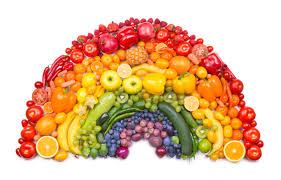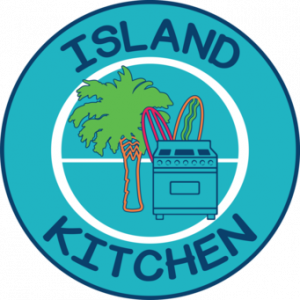Welcome to the first day of our 2021 Wellness Program “The Beauty Chef”!
Monday – Friday expect a daily email. Each day we will be addressing a specific topic regarding your path to wellness. This information will also be available through the Facebook group.
Be sure and read all the way to the bottom for our weekly -“Lunch Special” – provided by Island Kitchen in downtown Fernandina Beach!
We believe that “Knowledge is Power” – and plan to fill you with so much knowledge about the human body – how it works – and why sometimes it DOES NOT work properly. The information you learn in this program will change the way you look at food…and many other aspects in your life.
INFLAMMATION
Unfortunately, modern-day living is not good for gut health – poor soils, over consumption of processed food and eating products from animals fed on unnatural feed, the over-prescription of medications, pollution and stress all lead to imbalanced gut flora and inflammation.
Inflammation is the main way our body protects itself from injury, infection, bacteria and pathogens – it’s a response triggered when damage occurs to our tissues that allows the body to localize the damage are and then heal itself (think a swollen soar throat or swelling around an insect bite). The trouble is, if the body is unable to repair itself quickly and heal the damaged tissues, long term chronic inflammation can occur, which sends the immune system into overdrive and can stress the digestive system.
Put into the content of your gut, if you eat foods that irritate your gut lining over and over again, you’re injuring your gut 3 meals a day, 365 days a year. You may not see the inflammation in your gut, but it’s there, compromising the gut lining, allowing indigestible matter and toxins to flood through into the bloodstream where at some point it may manifest in skin problems, candida, learning difficulties, allergies, lethargy or susceptibility to colds, flu and autoimmune problems. Where there is gut inflammation there will be skin inflammation, and this means an accelerated decline of collagen and elastin as well as susceptibility to skin problems from acne to eczema.
Looking after your digestive system with gut friendly foods and probiotics and filling your plate with unprocessed, organic, antioxidant-rich fruits and veggies, seeds, nuts, herbs and spices is a great way to keep inflammation and disease at bay. Antioxidants help to mop up free radicals, which cause oxidative stress ad inflammation in the body. “The Beauty Chef” pg.11
HOMEWORK
 Inventory your kitchen! Having a light understanding of inflammation in the body and how it is caused by poor soils, over consumption of processed food and eating products from animals fed on unnatural feed, will help as you begin to replace your favorite fruits and veggies with organics. This is not a totally vegetarian approach – although it CAN be for those choosing that. When replacing proteins look for organic GRASS-FED meats.
Inventory your kitchen! Having a light understanding of inflammation in the body and how it is caused by poor soils, over consumption of processed food and eating products from animals fed on unnatural feed, will help as you begin to replace your favorite fruits and veggies with organics. This is not a totally vegetarian approach – although it CAN be for those choosing that. When replacing proteins look for organic GRASS-FED meats.
Now, Let’s talk COLOR! The colors in your foods represent the amazing variety of nutrients in those foods.
Have you ever heard that it is important to “eat a rainbow” of foods? This may be a good way to think about your diet because numerous functional foods can be recognized and grouped together by their color. Functional foods are foods or dietary components that may provide a health benefit beyond basic nutrition. Examples can include fruits and vegetables, whole grains, fortified or enhanced foods and beverages.
Dive into the color of the various functional foods listed below and unlock the health benefits that may already be on your plate. An easy way to get more functional foods on your plate is to fill half of your plate with some of the colorful fruits and vegetables mentioned below.
Orange/Red

Whether you think of a blazing fire or an early morning sunrise, orange and red are two of the most vibrant colors in the spectrum. Orange foods such as carrots, pumpkin, sweet potatoes, squash, and cantaloupe, include a plant compound known as carotenoids. Carotenoids include beta-carotene, which is converted into vitamin A in the body. Vitamin A has many roles within the body: it helps support the function of white blood cells (which is important for a healthy immune system), promotes bone growth, and helps to regulate cell growth and division. Vitamin A and two other types of carotenoids, lutein and zeaxanthin, are also important for healthy vision.
Also a carotenoid, lycopene is found in red foods such as tomatoes and tomato products, watermelon, and grapefruit. The main benefit of lycopene is the maintenance of prostate health.
Green
No, you don’t have to drive a hybrid or tend to your own victory garden. By simply adding more green vegetables to your menu, you can proudly say, ‘I’m going green!’
Try new veggies such as bok choy, mesclun, turnip greens, kale, or watercress while revisiting some old favorites like broccoli, collard greens, romaine lettuce, and spinach. This will put you well on your way to the recommended 5 servings of fruits and vegetables per day. Dark green vegetables are a functional food component powerhouse! Included in the long list of nutrients found in these veggies are potassium, dietary fiber, folate, vitamin A, vitamin E, and vitamin C.
Blue, Purple, Crimson, Brown
It may seem like a stretch to group these colors together, but humans have been doing it for centuries! Before conventional methods of dying fabrics, berries and teas were used to color the finest hand-woven fabrics for royalty. Now that these foods are no longer needed to color clothing, foods that are blue, purple, crimson, and even brown are gaining popularity due to the fact that they contain flavonoids. Berries, cherries, red grapes, red wine, dark chocolate, cocoa and some teas are good sources. Flavonoids are beneficial to our health because they may contribute to the maintenance of proper brain function and blood flow.
Tan
Tan is not usually the most exciting color in the spectrum, but tan colored foods still come packed with many health benefits. Whole wheat breads, cereals, and pastas that are higher in fiber are usually tan in color. The insoluble fiber found in wheat bran, corn bran, fruit and vegetable skins, and whole grains may contribute to the maintenance of a healthy digestive tract and reduce the risk of some types of cancer. Another type of dietary fiber is called beta glucan. This component can also be found in tan foods such as oat bran, oatmeal, oat flour, barley, and rye. Beta glucan-containing foods may reduce the risk of coronary heart disease.
White
Just because a food is white, doesn’t mean that it isn’t nutritious. In fact, white foods such as low-fat (1%) or fat-free milk, yogurt, and some cheeses are packed with vitamin D, calcium, and phosphorus. These vitamins and minerals aid in bone health and may help us maintain a healthy body weight. Yogurt also contains probiotics, which are bacteria that confer a health benefit, like promoting digestive health or supporting immune function.
Yellow
When you think of yellow foods, fat may not be the first to come to mind, however, after considering butter, margarine, olive oil, and vegetable oil, yellow is a common thread! Recent dietary guidance recommendations suggest that the type of fat that you consume can affect your health in various ways. While it is important to consume a diet that is low in saturated and trans fats, certain types of unsaturated fats such as linoleic acid (an omega-6 fatty acid) and linolenic acid (an omega 3-fatty acid) are essential for life and have to be consumed through the diet. These fats are important for proper growth in children, healthy skin, and to help regulate cholesterol. Fat is also needed for transport and absorption of fat-soluble vitamins A, D, E, and K, as well as carotenoids.
Research continues to tout the benefits of omega-3 fatty acids to help reduce the risk of heart disease and promote brain health and vision. Two examples of omega-3 fatty acids include eicosapentaenoic acid (EPA) and docosahexaenoic acid (DHA). Oily fish from cold waters, such as salmon, mackerel, tuna, and trout are especially rich in EPA and DHA.
Just by remembering to “eat a rainbow,” you can increase your intake of nutrients and healthful food components. So, the next time you reach for one of the above mentioned foods, remember that it is not only bursting with color and flavor but that it also contains a component that may improve your health.
~~~Lunch Special~~~
The special will be offered Tuesday – Saturday.
Starting Tuesday, January 19th:
Lunch Plate Special
Daikon Noodle & Grilled Salmon Salad with Lime & Ginger Dressing
$18.00
This is on page 93 in the cook book.



 Island Kitchen
Island Kitchen